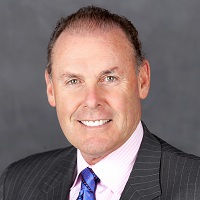Delaware Trust? You May Want to Consider Nevada Instead
A court decision opened the way for claims stemming from divorce. Nevada may now be a better jurisdiction for asset protection.


For decades, creating a trust in the state of Delaware has been the go-to option for investors looking for ironclad asset protection. The First State is rated one of the four most high-profile and highly ranked trust jurisdictions in the U.S. Many families have established a Delaware Dynasty Trust (DDT) or a Delaware Asset Protection Trust (DAPT).
A DDT is generally established by Mom and Dad or Grandpa and Grandma to benefit their decedents over multiple generations. The DDT may last up to 110 years. The DAPT is a trust established by one or both couples in which they are also beneficiaries into which they place their assets at a time when they have no current, pending or threatened lawsuits. If later a lawsuit arises, the assets in the trust are protected even though they may be defendants in such a lawsuit.
But a 2014 court decision has put Delaware’s vaunted trust shields to the test. The case: Kloiber v. Kloiber. It involves a dispute about a Delaware Dynasty Trust (DDT) during the divorce of Daniel and Beth Kloiber.

Sign up for Kiplinger’s Free E-Newsletters
Profit and prosper with the best of expert advice on investing, taxes, retirement, personal finance and more - straight to your e-mail.
Profit and prosper with the best of expert advice - straight to your e-mail.
One family’s drama has wide implications
In 2002, Daniel’s father, Glenn, established a DDT for the benefit of Daniel, Daniel’s spouse, and his descendants. The trust was drafted as a “support trust,” which is a form of dynasty trust, to provide support for the benefit of his children and grandchildren. The case reads like a TV drama. Over the years, the trust accumulated assets of hundreds of millions of dollars.
In 2002 Glenn initially made a gift to the trust of $15,000. But in 2003, son Daniel sold 99.45% of his shares in Exstream Software, a company he co-founded, to the trust for an estimated $6 million, according to court documents. Four years later, in 2007 the trust sold about 80% of those Exstream Software shares to a third-party company for $250 million. Finally, in 2008 the trust sold its remaining shares to a third-party company for about $60 million.
By the time Daniel and Beth decided to divorce in 2010, the trust was estimated to include about $310 million. Beth demanded a piece of this trust in the divorce settlement based on a precedent set in the 1973 Delaware case Garretson v. Garretson. Garretson v. Garretson concluded with a divorcing spouse getting access to the assets in a Delaware Dynasty Trust established for the support and maintenance of the beneficiaries.
The settlement agreement in the Kloibers’ 2014 divorce case eventually severed the original dynasty trust and created a separate trust for Beth, which was funded with some of the assets of the original DDT. Beth received the mansion in Florida, which was assessed at a property tax value of about $29 million, along with other assets not disclosed.
The assets that Glenn (the father-in-law) had intended solely for Daniel and his spouse and descendants were taken by his now ex-wife, Beth, rendering the original protection of assets useless.
Court decision could mean Nevada is a safer bet
There were other legal complications that arose out of this Delaware Dynasty Trust around health, education, maintenance and support. But the case has since led some investors to consider the efficacy of creating dynasty trusts in Nevada instead of Delaware.
Statutory case law in the Silver State doesn’t allow for claims from so-called “exception creditors,” which would include claims for alimony and spousal support. So, in Nevada, a divorced spouse will not be permitted to bust into a validly formed DDT or DAPT that was timely and properly established without the intent to defraud a creditor.
With the Kloiber v. Kloiber decision, Delaware’s case law now clearly allows for claims from these exception creditors. Therefore, as any qualified Nevada trust lawyer will tell you, the safest way to form a dynasty trust is to draft it as a discretionary trust, in a no-exception creditor state like Nevada, in which only the trustees have the sole authority to provide funds to beneficiaries.
What you should consider doing
- If you are considering establishing a dynasty trust for your family or a domestic assert protection trust, you may want to consider establishing it in a state that is more user friendly.
- If you have already established a DDT or DAPT in Delaware, consider redomiciling your trust to Nevada for greater protection.
Asset protection in Delaware can be a risky venture, and it may be beneficial for individuals and families to look elsewhere to establish asset protection trusts.
Jeffrey M. Verdon, Esq. is the Managing Partner of the Jeffrey M. Verdon Law Group, LLP, a Trusts & Estates boutique law firm located in Newport Beach, Calif. With more than 30 years of experience in designing and implementing comprehensive estate planning and asset protection structures, the law firm serves affluent families and successful business owners in solving their most complex and vexing estate tax, income tax, and asset protection goals and objectives.
Get Kiplinger Today newsletter — free
Profit and prosper with the best of Kiplinger's advice on investing, taxes, retirement, personal finance and much more. Delivered daily. Enter your email in the box and click Sign Me Up.

Jeffrey M. Verdon, Esq. is the lead asset protection and tax partner at the national full-service law firm of Falcon Rappaport & Berkman. With more than 30 years of experience in designing and implementing integrated estate planning and asset protection structures, Mr. Verdon serves affluent families and successful business owners in solving their most complex and vexing estate tax, income tax, and asset protection goals and objectives. Over the past four years, he has contributed 25 articles to the Kiplinger Building Wealth online platform.
-
 AI Heads to Washington
AI Heads to WashingtonThe Kiplinger Letter There’s big opportunity for AI tools that analyze MRIs and other medical images. But also big challenges that clinicians and companies will have to overcome.
By John Miley
-
 Ask the Editor: Questions on Amended Returns and Property
Ask the Editor: Questions on Amended Returns and PropertyAsk the Editor: Taxes, April 18, 2025 — Joy Taylor, The Kiplinger Tax Letter Editor, answers questions on amended returns, property and deductions.
By Joy Taylor
-
 Four Takeaways From Filing Your Taxes to Boost Your Financial Future
Four Takeaways From Filing Your Taxes to Boost Your Financial FutureNow that another tax season is in the rearview mirror for most of us, what lessons can you take from what you learned about your finances to plan for the future?
By Kate Winget
-
 What Claims Adjusters Are Thinking vs What They're Saying
What Claims Adjusters Are Thinking vs What They're SayingAfter a natural disaster, few of us are at our best, but here's what to keep in mind when you're interacting with your insurance company's claims adjuster.
By Karl Susman, CPCU, LUTCF, CIC, CSFP, CFS, CPIA, AAI-M, PLCS
-
 Looking to Make a Job Change? How to Stand Out Like a Pro
Looking to Make a Job Change? How to Stand Out Like a ProTo make a strong first impression in interviews or when networking, skip your job title and work history and use an opening gambit that highlights your talents.
By Anne deBruin Sample, CEO
-
 First 100 Days: Trump's Impact on Your Finances
First 100 Days: Trump's Impact on Your FinancesHere are some opportunities to consider regarding investing, interest rates and tax cuts as the financial landscape shifts under the new administration.
By Daniel Razvi, Esquire
-
 What Would Happen if You Put Your Tax Refund in an IRA?
What Would Happen if You Put Your Tax Refund in an IRA?Not only could you get a tax break, but the compounding effect over 35 years could turn the average refund into nearly $14,000.
By Romi Savova
-
 Children Can't Afford to Fly the Nest? Here's How to Help
Children Can't Afford to Fly the Nest? Here's How to HelpThe high cost of living means more adult children are staying at home. Here are four ways to help financially so they can eventually spread their wings.
By Kelli Kiemle, AIF®
-
 A QLAC Does So Much More Than Simply Defer Taxes
A QLAC Does So Much More Than Simply Defer TaxesHere are the multiple ways you can use a QLAC, from managing retirement risks to creating income for specific retirement needs and wants.
By Jerry Golden, Investment Adviser Representative
-
 Self-Directed Brokerage Accounts: Retirement's Hidden Gem?
Self-Directed Brokerage Accounts: Retirement's Hidden Gem?SDBAs are often overlooked, but they can offer more flexibility and growth potential inside your 401(k) when actively managed by a professional.
By Scott M. Dougan, RFC, Investment Adviser